Textbook
Preface
Table of Contents
Chapter 1 Introduction
1.1 Preliminary Remarks
1.2 The Concept of a Fluid
1.3 The Fluid as a Continuum
1.4 Dimensions and Units
1.5 Properties of the Velocity Field
1.6 Thermodynamic Properties of a Fluid
1.7 Viscosity and Other Secondary Properties
1.8 Basic Flow-Analysis Techniques
1.9 Flow Patterns: Streamlines, Streaklines, and Pathlines
1.10 The Engineering Equation Solver
1.11 Uncertainty of Experimental Data
1.12 The Fundamentals of Engineering (FE) Examination
1.13 Problem-Solving Techniques
1.14 History and Scope of Fluid Mechanics
Fundamentals of Engineering Exam Problems
Chapter 2 Pressure Distribution in a Fluid
2.1 Pressure and Pressure Gradient
2.2 Equilibrium of a Fluid Element
2.3 Hydrostatic Pressure Distributions
2.4 Application to Manometry
2.5 Hydrostatic Forces on Plane Surfaces
2.6 Hydrostatic Forces on Curved Surfaces
2.7 Hydrostatic Forces in Layered Fluids
2.8 Buoyancy and Stability
2.9 Pressure Distribution in Rigid-Body Motion
2.10 Pressure Measurement
Fundamentals of Engineering Exam Problems
Chapter 3 Integral Relations for a Control Volume
3.1 Basic Physical Laws of Fluid Mechanics
3.2 The Reynolds Transport Theorem
3.3 Conservation of Mass
3.4 The Linear Momentum Equation
3.5 The Angular-Momentum Theorem
3.6 The Energy Equation
3.7 Frictionless Flow: The Bernoulli Equation
Fundamentals of Engineering Exam Problems
Chapter 4 Differential Relations for a Fluid Particle
4.1 The Acceleration Field of a Fluid
4.2 The Differential Equation of Mass Conservation
4.3 The Differential Equation of Linear Momentum
4.4 The Differential Equation of Angular Momentum
4.5 The Differential Equation of Energy
4.6 Boundary Conditions for the Basic Equations
4.7 The Stream Function
4.8 Vorticity and Irrotationality
4.9 Frictionless Irrotational Flows
4.10 Some Illustrative Plane Potential Flows
4.11 Some Illustrative Incompressible Viscous Flows
Fundamentals of Engineering Exam Problems
Chapter 5 Dimensional Analysis and Similarity
5.1 Introduction
5.2 The Principle of Dimensional Homogeneity
5.3 The Pi Theorem
5.4 Nondimensionalization of the Basic Equations
5.5 Modeling and Its Pitfalls
Fundamentals of Engineering Exam Problems
Chapter 6 Viscous Flow in Ducts
6.1 Reynolds-Number Regimes
6.2 Internal versus External Viscous Flows
6.3 Semiempirical Turbulent Shear Correlations
6.4 Flow in a Circular Pipe
6.5 Three Types of Pipe-Flow Problems
6.6 Flow in Noncircular Ducts
6.7 Minor Losses in Pipe Systems
6.8 Multiple-Pipe Systems
6.9 Experimental Duct Flows: Diffuser Performance
6.10 Fluid Meters
Fundamentals of Engineering Exam Problems
Chapter 7 Flow Past Immersed Bodies
7.1 Reynolds-Number and Geometry Effects
7.2 Momentum-Integral Estimates
7.3 The Boundary-Layer Equations
7.4 The Flat-Plate Boundary Layer
7.5 Boundary Layers with Pressure Gradient
7.6 Experimental External Flows
Fundamentals of Engineering Exam Problems
Chapter 8 Potential Flow and Computational Fluid Dynamics
8.1 Introduction and Review
8.2 Elementary Plane-Flow Solutions
8.3 Superposition of Plane-Flow Solutions
8.4 Plane Flow Past Closed-Body Shapes
8.5 Other Plane Potential Flows
8.6 Images
8.7 Airfoil Theory
8.8 Axisymmetric Potential Flow
8.9 Numerical Analysis
Chapter 9 Compressible Flow
9.1 Introduction
9.2 The Speed of Sound
9.3 Adiabatic and Isentropic Steady Flow
9.4 Isentropic Flow with Area Changes
9.5 The Normal-Shock Wave
9.6 Operation of Converging and Diverging Nozzles
9.7 Compressible Duct Flow with Friction
9.8 Frictionless Duct Flow with Heat Transfer
9.9 Two-Dimensional Supersonic Flow
9.10 Prandtl-Meyer Expansion Waves
Fundamentals of Engineering Exam Problems
Chapter 10 Open-Channel Flow
10.1 Introduction
10.2 Uniform Flow; the Chézy Formula
10.3 Efficient Uniform-Flow Channels
10.4 Specific Energy; Critical Depth
10.5 The Hydraulic Jump
10.6 Gradually Varied Flow
10.7 Flow Measurement and Control by Weirs
Fundamentals of Engineering Exam Problems
Chapter 11 Turbomachinery
11.1 Introduction and Classification
11.2 The Centrifugal Pump
11.3 Pump Performance Curves and Similarity Rules
11.4 Mixed- and Axial-Flow Pumps: The Specific Speed
11.5 Matching Pumps to System Characteristics
11.6 Turbines
Appendix A: Physical Properties of Fluids
Appendix B: Compressible-Flow Tables
Appendix C: Conversion Factors
Appendix D: Equations of Motion in Cylindrical Coordinates
Appendix E: Introduction to EES
Answers to Selected Problems
Index
Study Guide
Chapter 1 Fluid Mechanics
Chapter 2 Fluid Statics
Chapter 3 Control Volume Relations for Fluid Analysis
Chapter 4 Differential Relations for a Fluid Particle
Chapter 5 Modeling, Similarity, and Dimensional Analysis
Chapter 6 Viscous Internal Flow
Chapter 7 Boundary Layer Flows
Chapter 8 Potential Flow and Computational Fluid Dynamics
Chapter 9 Compressible Flow
Chapter 10 Open-Channel Flow
Chapter 11 Turbomachinery
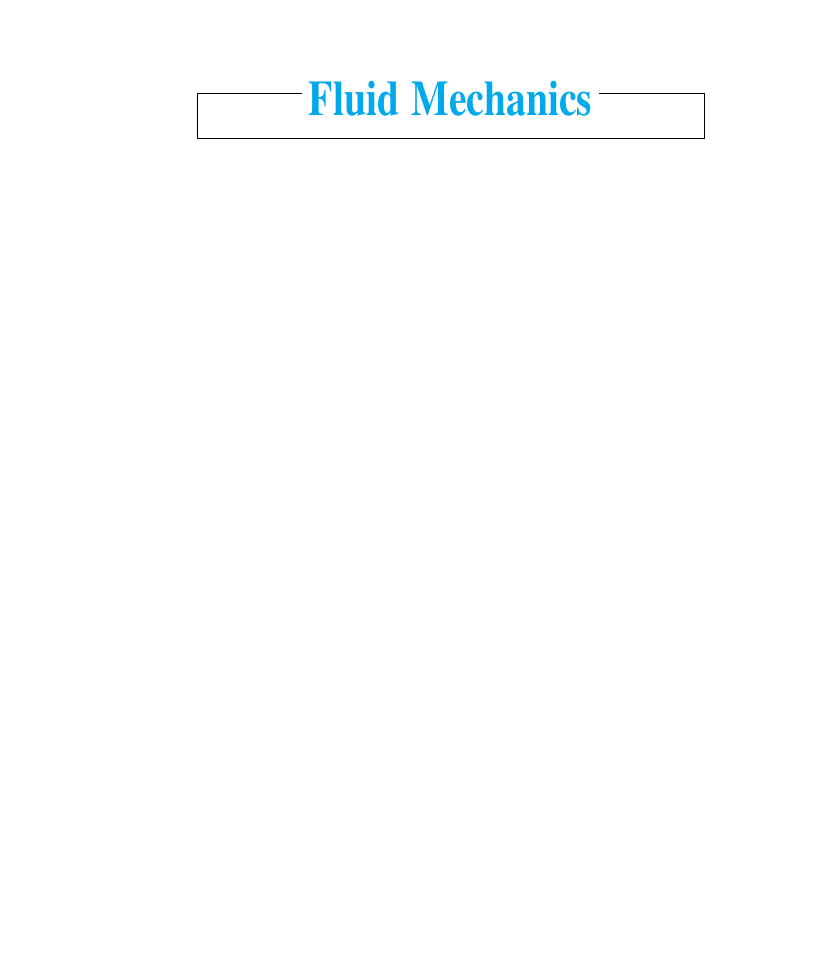
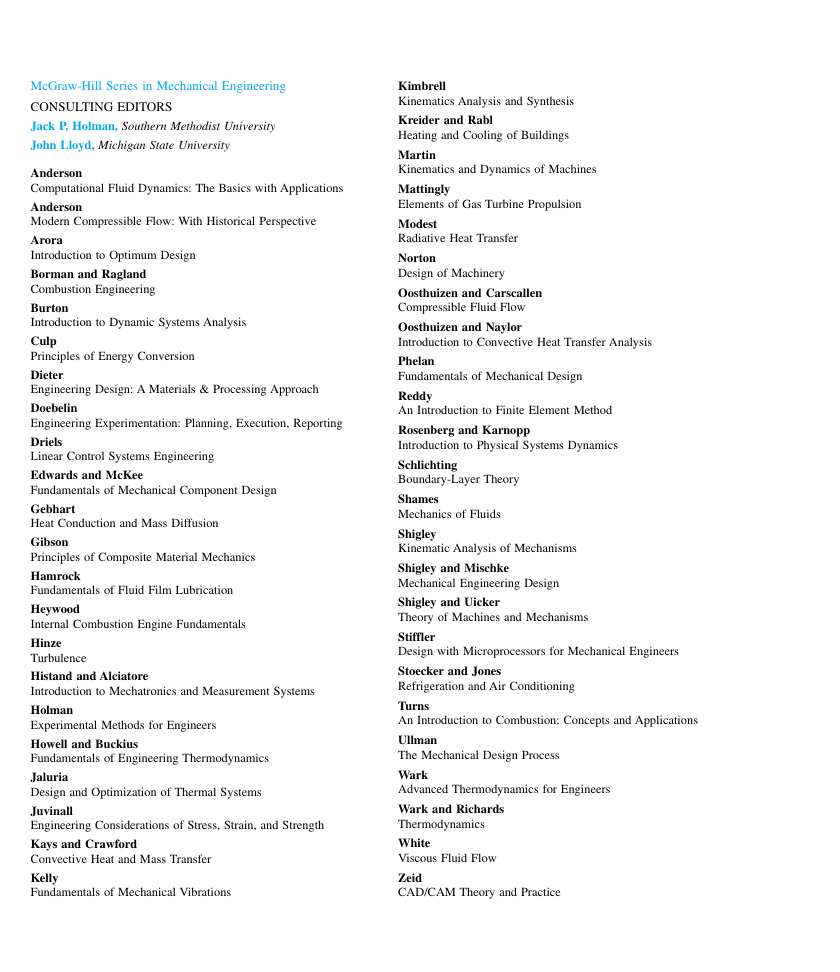
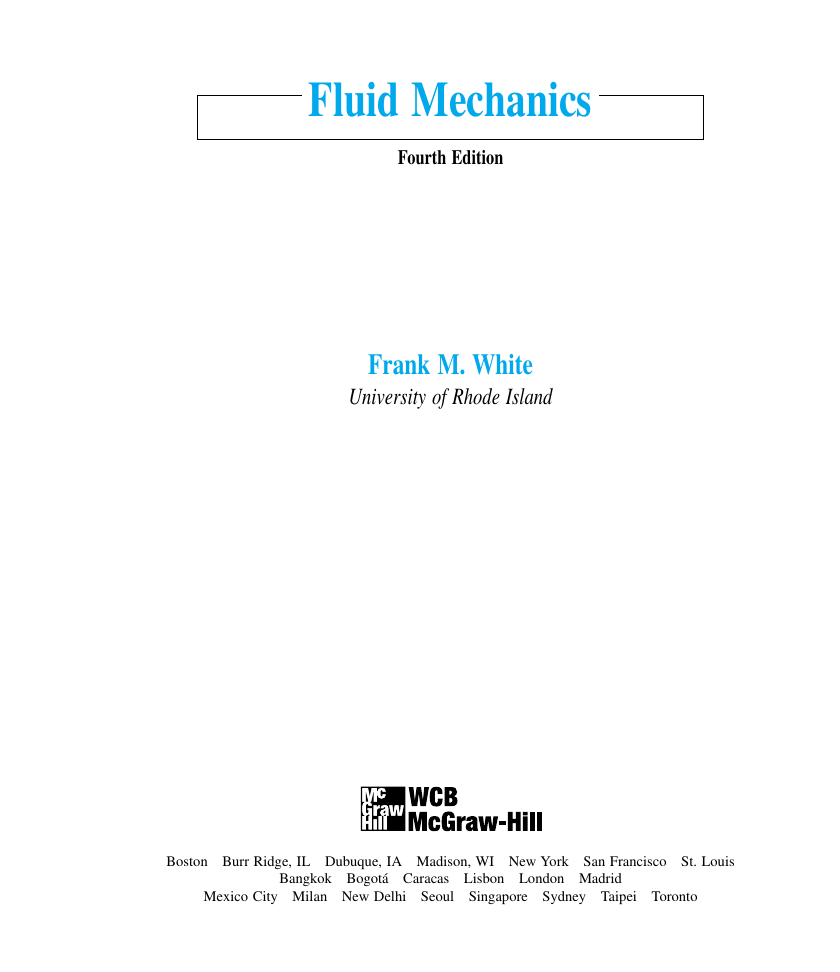
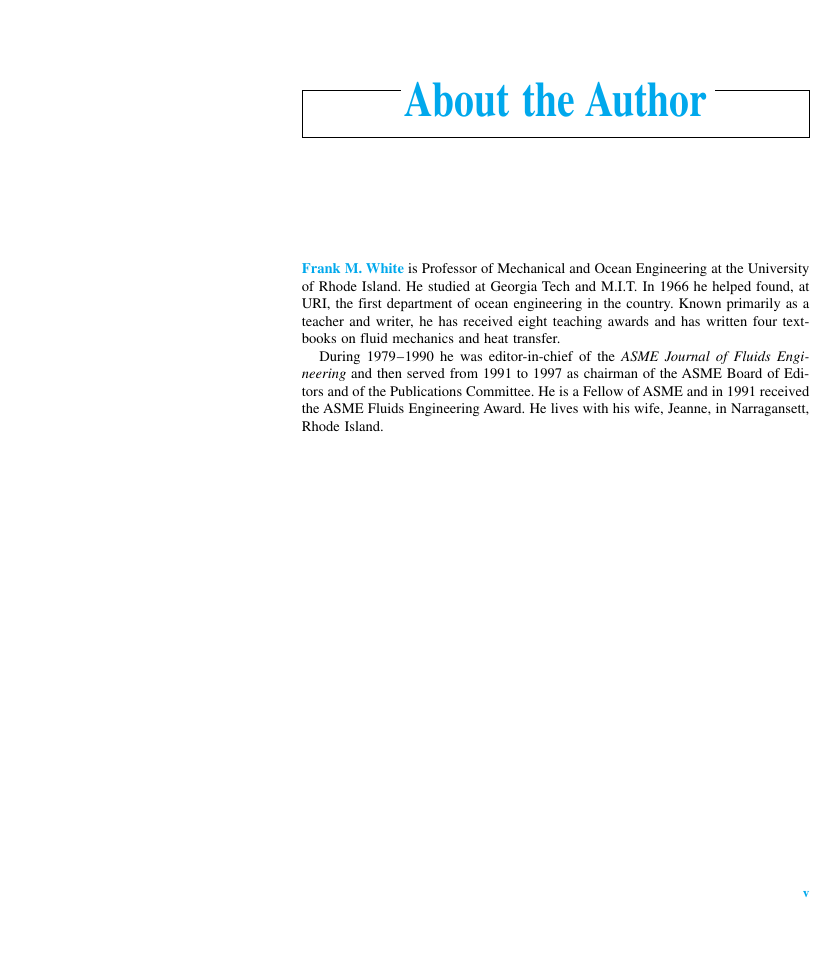

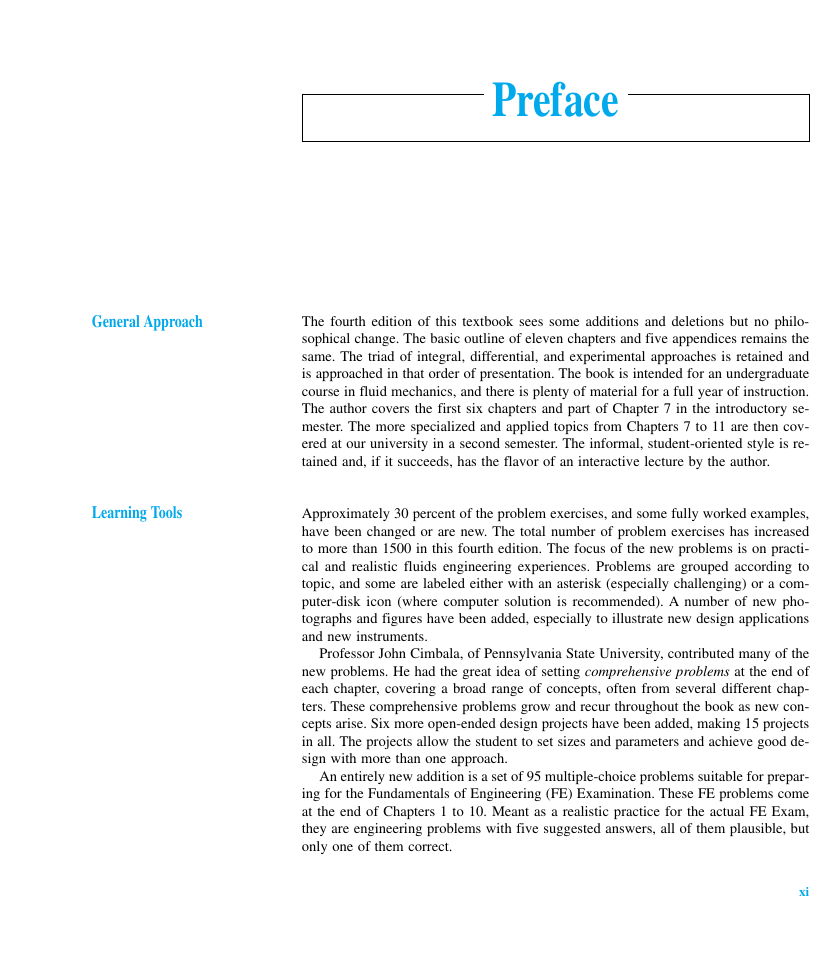
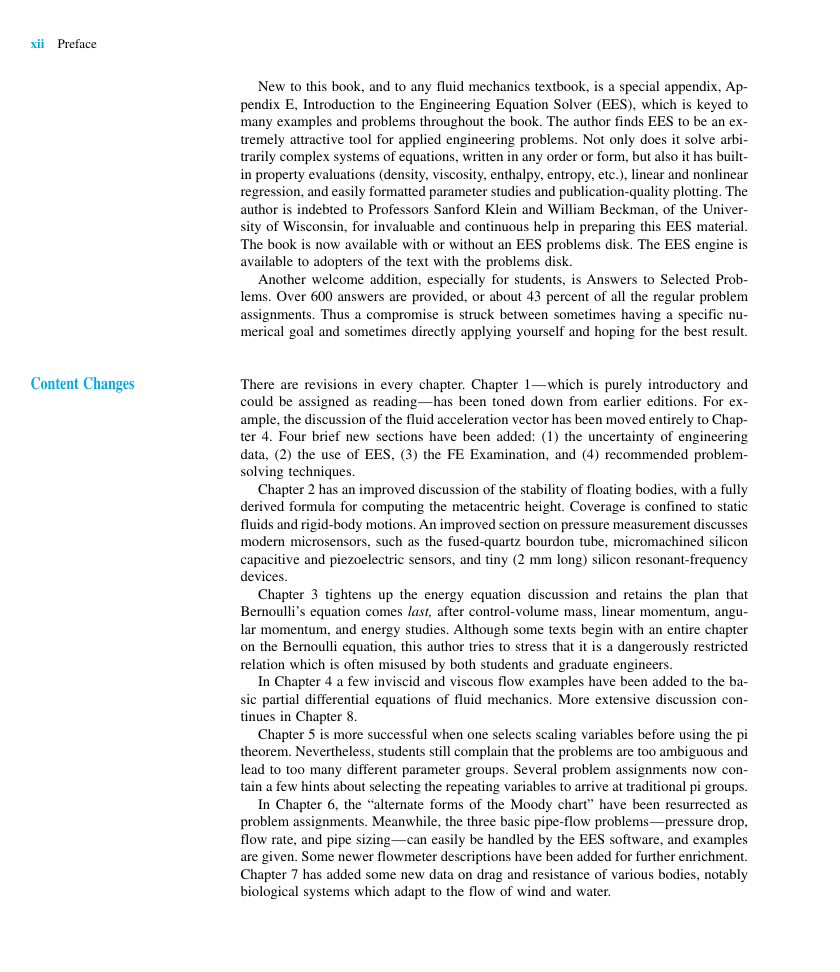
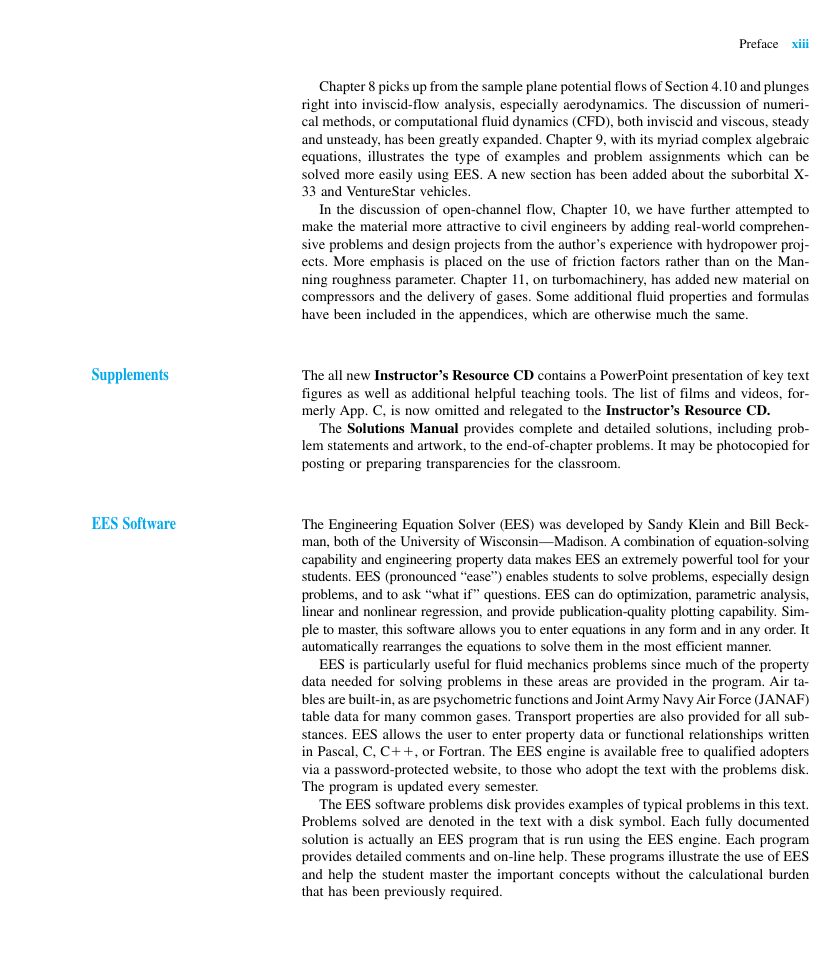








 2023年江西萍乡中考道德与法治真题及答案.doc
2023年江西萍乡中考道德与法治真题及答案.doc 2012年重庆南川中考生物真题及答案.doc
2012年重庆南川中考生物真题及答案.doc 2013年江西师范大学地理学综合及文艺理论基础考研真题.doc
2013年江西师范大学地理学综合及文艺理论基础考研真题.doc 2020年四川甘孜小升初语文真题及答案I卷.doc
2020年四川甘孜小升初语文真题及答案I卷.doc 2020年注册岩土工程师专业基础考试真题及答案.doc
2020年注册岩土工程师专业基础考试真题及答案.doc 2023-2024学年福建省厦门市九年级上学期数学月考试题及答案.doc
2023-2024学年福建省厦门市九年级上学期数学月考试题及答案.doc 2021-2022学年辽宁省沈阳市大东区九年级上学期语文期末试题及答案.doc
2021-2022学年辽宁省沈阳市大东区九年级上学期语文期末试题及答案.doc 2022-2023学年北京东城区初三第一学期物理期末试卷及答案.doc
2022-2023学年北京东城区初三第一学期物理期末试卷及答案.doc 2018上半年江西教师资格初中地理学科知识与教学能力真题及答案.doc
2018上半年江西教师资格初中地理学科知识与教学能力真题及答案.doc 2012年河北国家公务员申论考试真题及答案-省级.doc
2012年河北国家公务员申论考试真题及答案-省级.doc 2020-2021学年江苏省扬州市江都区邵樊片九年级上学期数学第一次质量检测试题及答案.doc
2020-2021学年江苏省扬州市江都区邵樊片九年级上学期数学第一次质量检测试题及答案.doc 2022下半年黑龙江教师资格证中学综合素质真题及答案.doc
2022下半年黑龙江教师资格证中学综合素质真题及答案.doc